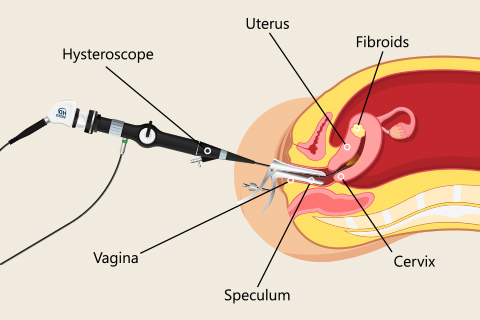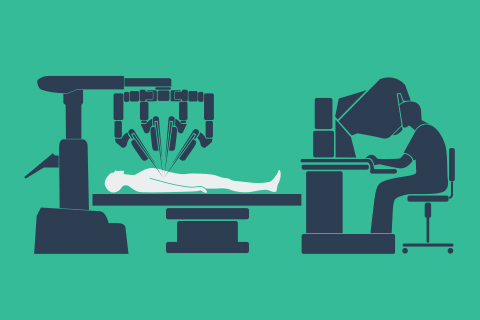Hysteroscopy
Hysteroscopy is a minimally invasive procedure to view the cavity of the uterus. This is accomplished by using a fiber-optic camera passed through the cervix.

Diagnostic hysteroscopy is used to view the cavity and assist in diagnosing a problem. It is useful in the evaluation of abnormal pre- and post-menopausal bleeding in conjunction with a D&C, examining a uterine mass, diagnosing a uterine malformation, and in an infertility evaluation. Operative hysteroscopy is when a problem is addressed such as removing a polyp or fibroid, treatment of abnormal bleeding with endometrial ablation, tubal ligation, correcting anatomical malformations, or removing intrauterine scar tissue.
Preoperative Preparation
We recommend not eating or drinking after midnight the night before your procedure. Your physician may request that you take medicine the night before the procedure. If this is the case, please follow your physician’s instructions. We recommend leaving jewelry at home and having someone drive you and pick you up for the procedure. You should arrive at the surgery center 1 ½ hours prior to the procedure or the hospital 2 hours prior to the procedure.
The Procedure
Your doctor will dilate your cervix with specialized instruments followed by introducing the fiber-optic camera into the uterus through your cervix. Fluid is used to expand the cavity of the uterus to better visualize the anatomy. You will be under general anesthesia. Following surgery, you will go to the recovery room for a short amount of time. Once you have recovered, you will be given discharge instructions and go home. If your procedure requires an overnight stay, you will be transferred to your room.
General risks of hysteroscopy include damage to surrounding structures, pain or cramping, bleeding which may or may not require transfusion, blood clot formation and uterine perforation which may necessitate having perform additional surgery to address any complication. We take every measure to minimize these surgical risks.
Postoperative Expectations
Postoperatively you can anticipate uterine cramping for 24-48 hours. It is not uncommon to notice vaginal spotting postoperatively, and some women may experience menstrual irregularity including a missed period over the next 6 weeks. For the next 1-2 days, you may also experience abdominal swelling, a sore throat, and occasional nausea. Sometimes taking a warm bath or using a heating pad can ease these symptoms. Do not drink alcohol for 1-2 days postoperatively or while you are taking narcotics. We recommend not driving while you are still on narcotics for pain relief. It is okay to shower at any time postoperatively. If pathology is sent, you will either be contacted or your physician will discuss the results at your postoperative visit. Avoid sexual activity, tampons or douching for at least 1 week postoperatively.
When to Call
We are available 24 hours/day 7 days a week to address concerns. You should contact us for any of the following concerns:
- Pain not relieved by your narcotics
- Fever of 101 or greater
- Vaginal bleeding soaking more than 1 sanitary pad in two hours
- Persistent nausea and/or vomiting for more than 24 hours post operatively
Our Locations
- NORTHSIDE OFFICE
 404-252-1137
404-252-1137
- EAST COBB OFFICE
 404-252-1137
404-252-1137
- JOHNS CREEK OFFICE
 404-252-1137
404-252-1137
- NORTHSIDE FORSYTH OFFICE
 404-252-1137
404-252-1137
Let's stay in touch
Our monthly newsletter keeps you up-to-date on healthy lifestyle, latest news, and our practice.




